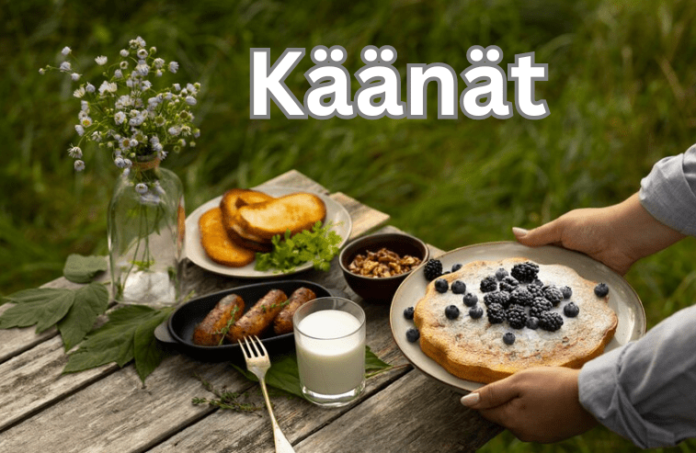The term Käänät carries some intrigue at first because of its unusual phonetic structure and its uncommon usage in everyday speech. On the other hand, it has profound cultural and linguistic relevance, especially when considering specific indigenous communities and their languages. The different facets of Käänät, such as its cultural history, linguistic traits, and place in modern society, will all be covered in this essay.
Also Read Article: Monkey Tail Cactus
Table of Contents
Cultural Importance
Certain indigenous populations, especially those found in areas like Northern Europe, Siberia, or North America, are frequently linked to the term Käänät. The social structures, languages, and practices of these societies are influenced by their complex historical backgrounds. The Käänät culture, which reflects a worldview that values harmony and balance, places a strong emphasis on a person’s relationship to the land, nature, and community. Käänät communities have long engaged in cultural traditions that capture their history and values, including as music, art, and storytelling. The transmission of knowledge and cultural standards from one generation to the next depends heavily on oral traditions. Lessons like the value of community, respect for the environment, and the interdependence of all living things are frequently imparted through storytelling. Despite the difficulties presented by modernity and globalization, the Käänät peoples are able to preserve a feeling of identity and continuity through these myths.
Conventional Methods and Art Forms
Traditional customs and artistic manifestations are essential to communal life and identity in Käänät culture, and they go beyond simple aesthetics. For example, culturally significant symbols and themes are frequently included into traditional crafts including weaving, beading, and carving. These creative forms serve not just as displays of creativity but also as mediums for storytelling and cultural preservation. Another essential component of Käänät cultural expression is dance and music. Social ties and cultural pride are strengthened by the traditional songs and dances that frequently accompany community events and celebrations. Drums and flutes, two instruments exclusive to the Käänät, contribute unique sounds reminiscent of its musical history. These performances provide an opportunity for the community to get together, share experiences, and celebrate their identity.
Qualities of Language
From a linguistic perspective, Käänät offers an intriguing exploration of language evolution, structure, and development. The languages of the Käänät peoples are distinct from those of their neighbors and are frequently a member of wider language families. Scholars examining the Käänät languages have observed their intricate grammatical structures, extensive metaphorical usage, and a vocabulary closely linked to the natural environment.
Syntax and Phonetics
The phonetic characteristics of Käänät languages are usually different, with unique sounds that are absent from languages spoken by a wider audience. Given the linguistic diversity of the Käänät peoples, sounds made with various articulatory settings may be included in the phonetic inventory. These languages also frequently use a range of syntactic elements that enable the succinct expression of complicated ideas. For instance, speakers can transmit complex meanings in a single word by using agglutination, which is the process of adding prefixes and suffixes to root words. A rich and expressive vocabulary that captures the speakers’ cultural and environmental settings is made possible by this linguistic trait. The grammatical intricacy of the Käänät languages is demonstrated by their ability to express certain themes pertaining to community, spirituality, and nature.
Language Conservation Initiatives
Even though the Käänät languages are quite rich in language, many of them are in danger of going extinct because of a number of issues like urbanization, globalization, and the dominance of larger languages. In order to preserve the cultural legacy connected to these languages, language preservation initiatives are essential. The creation of instructional materials, language instruction, and community workshops are among the initiatives aiming at recording and reviving the Käänät languages. In order to develop curricula that include traditional knowledge and practices, linguists, community members, and educational institutions frequently collaborate. Käänät communities hope to inspire younger generations to embrace their language and culture by encouraging a sense of pride in their linguistic history.
Current Significance
Beyond language and cultural studies, the idea of Käänät is used in modern society as a lens to look at more general social and environmental issues. Indigenous communities’ experiences and viewpoints provide important insights on social justice, cultural preservation, and sustainability as they negotiate the challenges of contemporary existence.
Speak Up and Be Represented
The Käänät people are participating in more and more advocacy work to spread the word about their rights and the value of protecting their traditional heritage. These campaigns frequently address topics like environmental preservation, cultural acknowledgment, and land rights. Käänät communities fight against assimilation by standing up for their rights and taking back control of their cultural narratives. Additionally, how Käänät cultures are portrayed in literature, movies, and other media greatly influences how the general public views them. Positive portrayals have the power to dispel myths and advance a greater comprehension of the complexity of indigenous existence. The voices of Käänät are given a platform via storytelling and artistic expression, which promotes better empathy and cross-cultural understanding.
Ecology Prudence
The Käänät people have a deep relationship with their surroundings because of their emphasis on the significance of ecological balance in their worldview. The knowledge and practices of Käänät villages provide important insights into sustainable living as the world’s environmental problems worsen. Their centuries-old ecological knowledge offers a foundation for comprehending the complex interactions that exist between people and the natural world. Sustainable practices can be promoted and knowledge exchanged between Käänät communities and environmental organizations. By recognizing their knowledge and contributions to international sustainability initiatives, these collaborations not only help the environment but also strengthen the position of the Känät people.
Conclusion
The diverse range of cultural and linguistic traditions found in Känät is a testament to the tenacity and inventiveness of indigenous people. The Känät peoples are deeply connected to their past and identity through their art, language, and social rituals. It is becoming more and more important to preserve and promote Känät culture as modern threats to their way of life grow. Society can create a better respect for cultural variety and advance social fairness by acknowledging and appreciating the contributions made by Känät communities. Känät’s journey serves as a reminder of the value of language, community, and storytelling in assisting people in managing the challenges of today’s complex world. It is essential that we respect and protect the vibrant languages and cultures that weave together our diverse world as we go forward.





